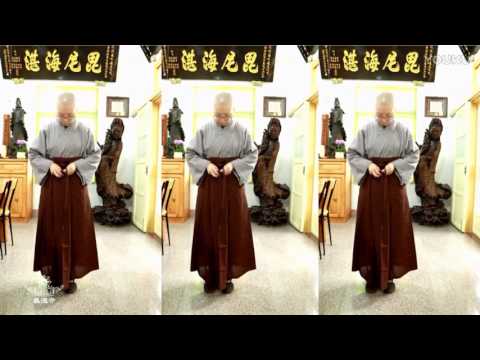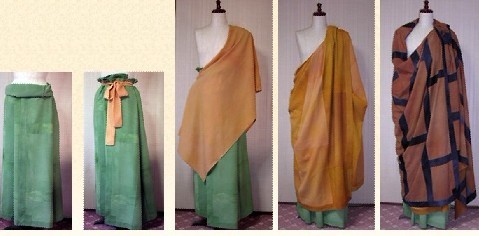The correct robes for nuns, especially the sankacchika, has been an area of some confusion, which unfortunately has probably not been helped much by the only academic paper on the topic, which primarily used Mahasanghika textual sources.
A lot of people in the Buddhist community seem to have no idea what ancient nuns really wore.
For the benefit of the general public, I would therefore like to share this excellent video approximating the ancient Indian manner of wearing bhikkhuni robes, especially the sankacchika (shawl-top), according to Chinese Buddhism. I expect the old school Thai cultural understanding is also the same, but the Pali textual sources are not as comprehensive at the Chinese.
There is enough literature around this in Chinese from multiple sources to know this is accurate for up to around the 7th cent CE (I have put a pic of a more original way in the comments).
So I have linked the above video from Yidesi temple in Taiwan showing the Nanshan commentarial way of wearing sankacchika, etc. Yidesi has 100+ nuns and is a famous nuns’ college in Taiwan.
N.B. this is Nanshan tradition, so there is also an additional right shoulder cover (2x sankacchika). This is a feature of this commentarial school. The double sankacchika style might also be a good “first time sankacchika” for anyone looking to try wearing one who hasn’t before, as there is about the same coverage as a T shirt.
The venerable is using a sewn one for the left shoulder, but Yijing says the sewn one is also not 100% Indian style. It also makes her look a bit uneven here.
This 2x sankacchika style shows up in art from the post CE period, but the original way has only the LHS sankacchika. LHS only unsewn sankacchika is not an easy style to wear at all & really needs a belt or tie to stop it from falling everywhere. Otherwise there is a risk of exposure. We can frequently see a girdle with the sankacchika in Central Asian art.
The venerable is wearing the Chinese long sleeve top underneath to demonstrate, however, this kind of top would not be worn in ancient India due to being unorthodox/foreign/“lay”.
Xuanzang’s description of a sankacchika:
-covers left hand shoulder
-wraps armpits
-open on left and right sides
-length below the waist
Example of sankacchika IRL (note 90cm x145cm measurement).
Diagram of sankacchika & more info (Chinese).
https://kknews.cc/culture/mg4mx6.html
Sculpture of sankacchika (example only, I have no idea how old this one is).
http://www.wfcmw.cn/pingpai/culture/2021-03-04/437266.html
I hope that answers some of the confusion. Tagging Ven.s @vimalanyani and @pasanna









